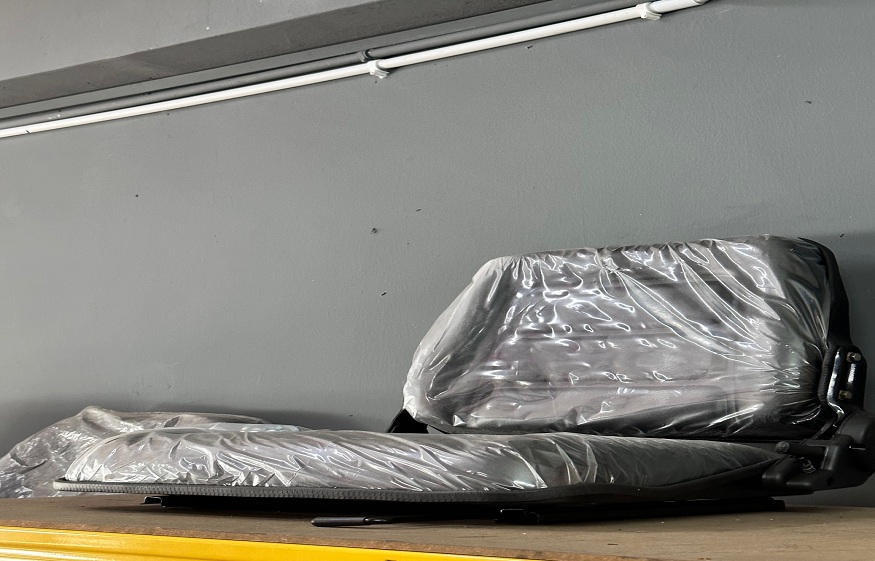For decades, the forklift has stood as the unsung hero of warehouses, construction sites, and shipping yards, tirelessly moving mountains of materials. While much attention has been paid to the machinery’s power, efficiency, and safety features, the humble forklift cushion seat, the operator’s primary point of contact, has undergone a quiet yet significant evolution. This journey, driven by a growing understanding of ergonomics, operator well-being, and productivity, has transformed the forklift seat from a rudimentary perch to a sophisticated piece of engineering designed for optimal comfort and reduced strain.
The Spartan Era: Early Forklift Seating
The earliest forklifts offered little in the way of operator comfort. Seats were often simple, unpadded metal or basic vinyl cushions mounted directly onto the chassis. These offered minimal support and did little to absorb the vibrations and jolts inherent in operating heavy machinery. Operators endured long shifts on these unforgiving surfaces, leading to discomfort, fatigue, and potentially long-term musculoskeletal issues.
The Dawn of Ergonomics: Introducing Basic Adjustments
As awareness of ergonomics and its impact on productivity and worker health grew, forklift seat design began to incorporate basic adjustments. The introduction of rudimentary suspension systems, often utilizing springs or simple dampers, marked a significant step forward. These systems offered a degree of shock absorption, mitigating some of the more jarring impacts. Fore-and-aft adjustments also became more common, allowing operators to position themselves at a comfortable distance from the controls. While these advancements were modest, they signaled a growing recognition of the operator’s needs.
The Rise of Contoured Comfort: Shaping the Modern Seat
Contoured cushions, designed to provide better support to the lumbar region and distribute weight more evenly, became increasingly prevalent. Higher-quality foam padding replaced basic cushioning, offering improved resilience and comfort over longer periods. Durable and breathable upholstery materials, such as improved vinyl and fabric blends, also emerged, addressing issues of heat buildup and wear and tear.
Suspension Sophistication: Absorbing the Bumps
Mechanical suspension systems became more refined, incorporating adjustable springs and dampers to cater to different operator weights and operating conditions. Air suspension systems, offering a more sophisticated and customizable ride, gradually found their way into higher-end forklift models. These systems utilize compressed air to cushion the operator, effectively absorbing vibrations and providing a smoother, less fatiguing experience, particularly on uneven surfaces.
Beyond the Basics: Integrated Comfort Features
The 21st century has ushered in an era of integrated comfort features in forklift seat design.Armrests, often adjustable for height and angle, provide additional support for the arms and shoulders, reducing strain during long operating hours. Lumbar support systems, both manual and pneumatic, allow operators to customize the curvature of the seat back to maintain proper spinal alignment. Swivel seats, particularly beneficial for operators who frequently need to look in different directions, enhance visibility and reduce neck and back strain.
Climate Control: Adapting to the Environment
Recognizing that operator comfort is also influenced by environmental factors, some advanced forklift seats now incorporate climate control features. Heated seats provide warmth in cold environments, while ventilated seats promote airflow to keep operators cool and dry in hot conditions.These features contribute significantly to operator well-being and can positively impact focus and productivity, particularly in extreme temperature environments.
The Technological Integration: Sensors and Data
The latest advancements in forklift seat technology are beginning to integrate sensors and data collection capabilities. These systems can monitor operator posture, vibration exposure, and seat occupancy. This data can be used to provide feedback to operators on their seating position, track potential risks of fatigue or injury, and inform maintenance schedules for the seat itself.
The Ergonomic Imperative: A Focus on Operator Well-being
The evolution of forklift seat technology is fundamentally driven by an increasing understanding of the importance of ergonomics. Designing seats that support the natural curvature of the spine, minimize vibration transmission, and offer adjustability is crucial for preventing musculoskeletal disorders, a common issue among forklift operators.Comfortable and well-supported operators experience less fatigue, maintain better focus, and ultimately contribute to higher productivity and fewer workplace accidents.
The Future of Forklift Seating: Customization and Personalization
Looking ahead, the future of forklift seat technology is likely to be characterized by greater customization and personalization. Seats may incorporate advanced materials that adapt to the operator’s body shape and weight. Biometric sensors could automatically adjust seat settings based on individual operator profiles. Active suspension systems that proactively respond to terrain changes are also a possibility. The ultimate goal will be to create a truly ergonomic and comfortable operating environment that caters to the unique needs of each individual.
This evolution, marked by advancements in materials, suspension systems, adjustability, and integrated features, has significantly improved the operator experience. As technology continues to advance, the “throne of productivity” will undoubtedly become even more comfortable, supportive, and personalized, further empowering the unsung heroes of material handling.

